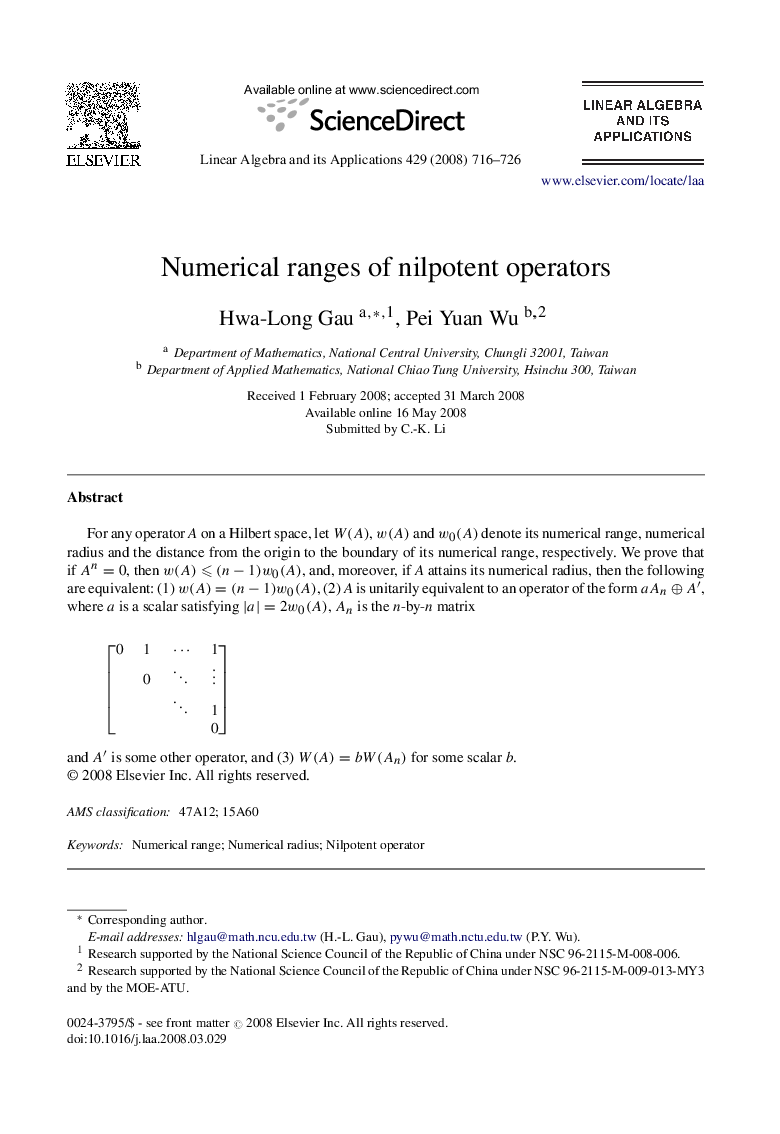| Article ID | Journal | Published Year | Pages | File Type |
|---|---|---|---|---|
| 4602759 | Linear Algebra and its Applications | 2008 | 11 Pages |
Abstract
For any operator A on a Hilbert space, let W(A)W(A), w(A)w(A) and w0(A)w0(A) denote its numerical range, numerical radius and the distance from the origin to the boundary of its numerical range, respectively. We prove that if An=0An=0, then w(A)⩽(n-1)w0(A)w(A)⩽(n-1)w0(A), and, moreover, if A attains its numerical radius, then the following are equivalent: (1) w(A)=(n-1)w0(A)w(A)=(n-1)w0(A), (2) A is unitarily equivalent to an operator of the form aAn⊕A′aAn⊕A′, where a is a scalar satisfying |a|=2w0(A)|a|=2w0(A), AnAn is the n-by-n matrix01⋯10⋱⋮⋱10andA′A′ is some other operator, and (3) W(A)=bW(An)W(A)=bW(An) for some scalar b.
Related Topics
Physical Sciences and Engineering
Mathematics
Algebra and Number Theory
Authors
Hwa-Long Gau, Pei Yuan Wu,
